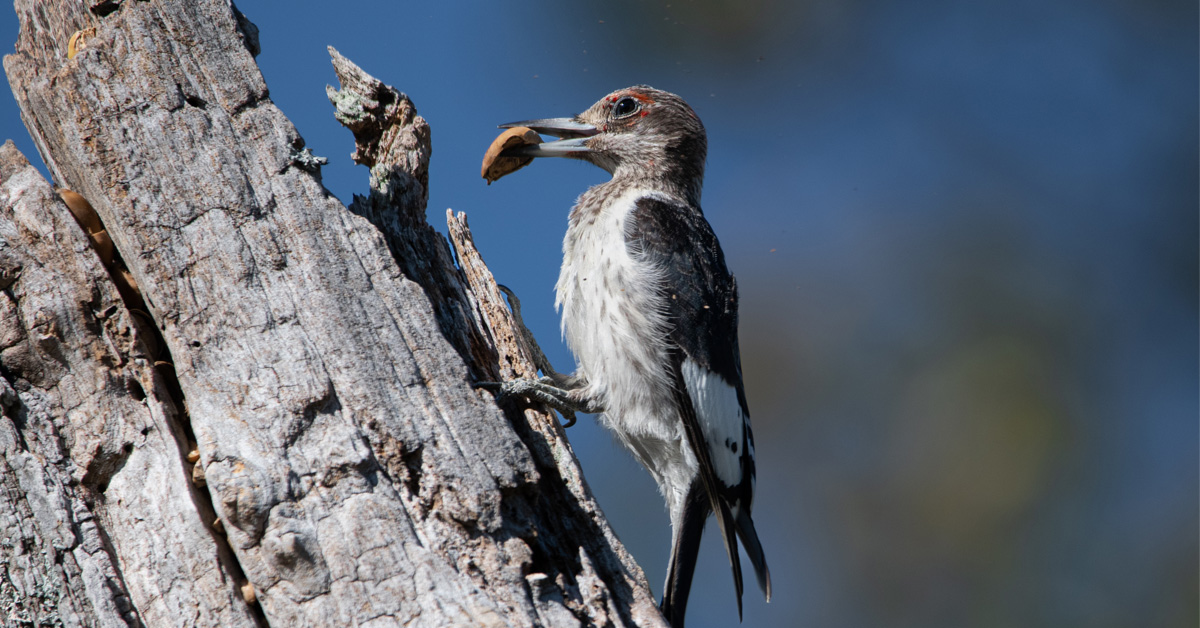
A juvenile red-headed woodpecker at the Great Dismal Swamp National Wildlife Refuge.
By Blogger Wade Monroe
Photos by Wade Monroe
Hello all! This April I had the pleasure of exploring the Suffolk Loop portion of the Virginia Bird and Wildlife Trail (VBWT) system. The loop sits in the Coastal Region, is comprised of 10 sites, and sprawls throughout southeastern Virginia. The Suffolk Loop is undoubtedly the largest area of the VBWT I have yet to explore; one site alone, the Great Dismal Swamp National Wildlife Refuge, is nearly 113,000 acres and spills over the border into North Carolina. I could write for pages upon pages about the loop, but for the sake of concision I will once again focus on the “hot spots” of the loop, particularly the Great Dismal Swamp National Wildlife Refuge, as it is unquestionably the crown jewel.
We will start at the Hoffler Creek Wildlife Preserve, an urban oasis located in the neighboring city of Portsmouth. This site is a much more manageable size, 142 acres, and features four walking trails and access to a small lake in the center of the preserve—perfect for an easy day trip. This is also a popular spot for birdwatching, although mammals such as fox, deer, and river otter are common enough to make it certainly worth a visit. Additionally, this site is extra special as it is the last portion of undeveloped land in the Hoffler Creek watershed!
Next up we have the Lone Star Lakes, which is in northern Suffolk, located along the Nansemond River, Cedar Creek, and Chuckatuck Creek. Similar to many VBWT sites in the area, this park offers the opportunity to see a wide variety of wintering waterfowl, as well as migratory songbirds during the spring. Raptors of all sizes are common, though watching belted kingfishers hunt the lakes and tributaries remains my favorite. The site contains 7 miles of trails, so you are certain to catch a glimpse of wildlife while there.
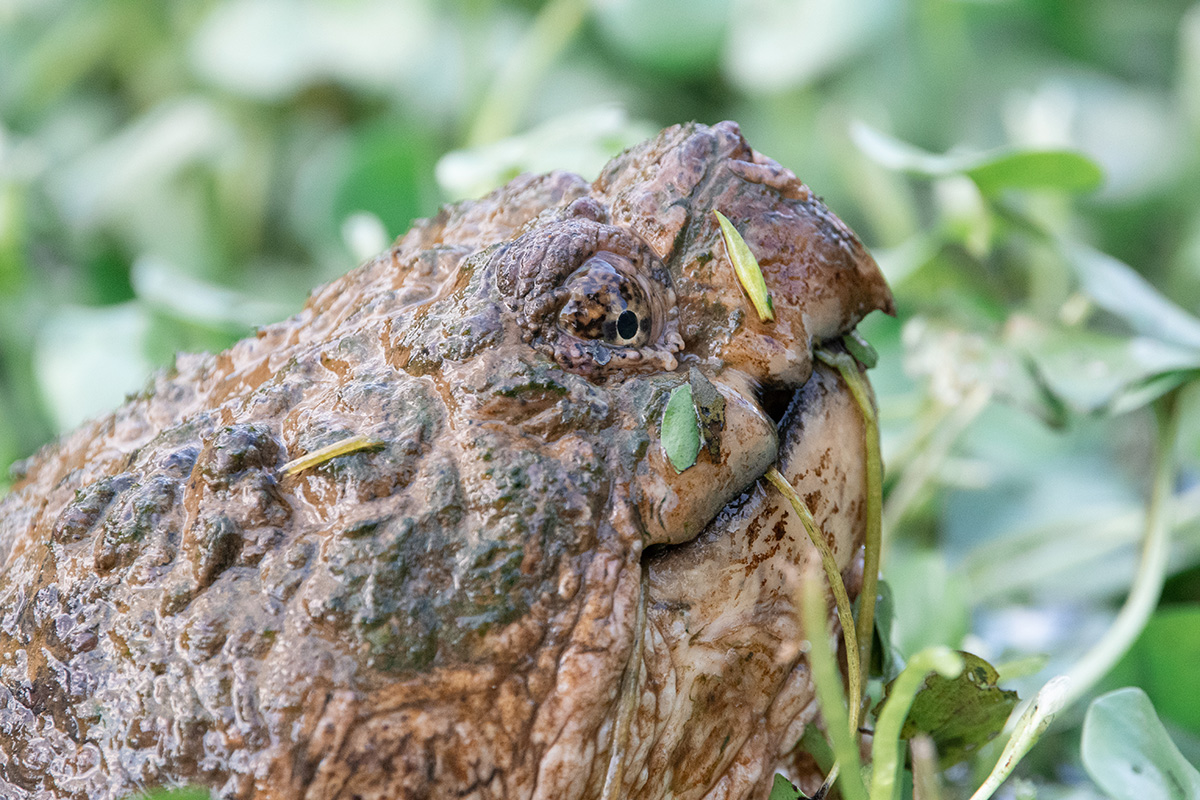
A snapping turtle was spotted!
Finally, we have my favorite: the Great Dismal Swamp National Wildlife Refuge! It is truly a site unlike any other I have ever been to. Upon arriving at the refuge, I was immediately reminded of past times spent in Florida, Louisiana, and Oklahoma all at once. The flora and fauna of the refuge is a distinct mix of mid-Atlantic piedmont and southern swamp. The Great Dismal Swamp is the largest site on the entirety of the coastal region of the VBWT system. At almost 113,000 acres the refuge offers a little bit of everything—a lake, small ponds, sphagnum moss bogs, and marshes, as well as some forested wetlands. The refuge has something for everyone with more than 40 miles of biking and hiking trails and a “wildlife drive” more than 6 miles long that winds its way through the swamp and ends at Lake Drummond.
Lake Drummond is approximately 3 miles wide and is one of only two natural lakes in the state of Virginia. In fact, scientists still do not know exactly how Lake Drummond was formed. The most accepted theory is that a meteor crashed into the center of the swamp, forming the perfectly round lake we see today. Coincidentally, (or perhaps not) this theory aligns itself seamlessly with an Indigenous legend as to how the lake was formed. According to legend, the lake was formed after a firebird made its nest in the swamp. If a meteor was the cause for the formation, it means that the lake is, in geological terms, not terribly old, and that humans likely witnessed the creation of the lake, hence the legend of the firebird. As I looked across the lake, I tried to comprehend what it must have been like to witness such an event—terrifying for sure! At the lake’s edge, as well as throughout the swamp you can find one of my favorite trees, the massive bald cypress. The bald cypress is a species of rare deciduous conifer, of which there are only 20 known species, and have been known to live well over 1,000 years!
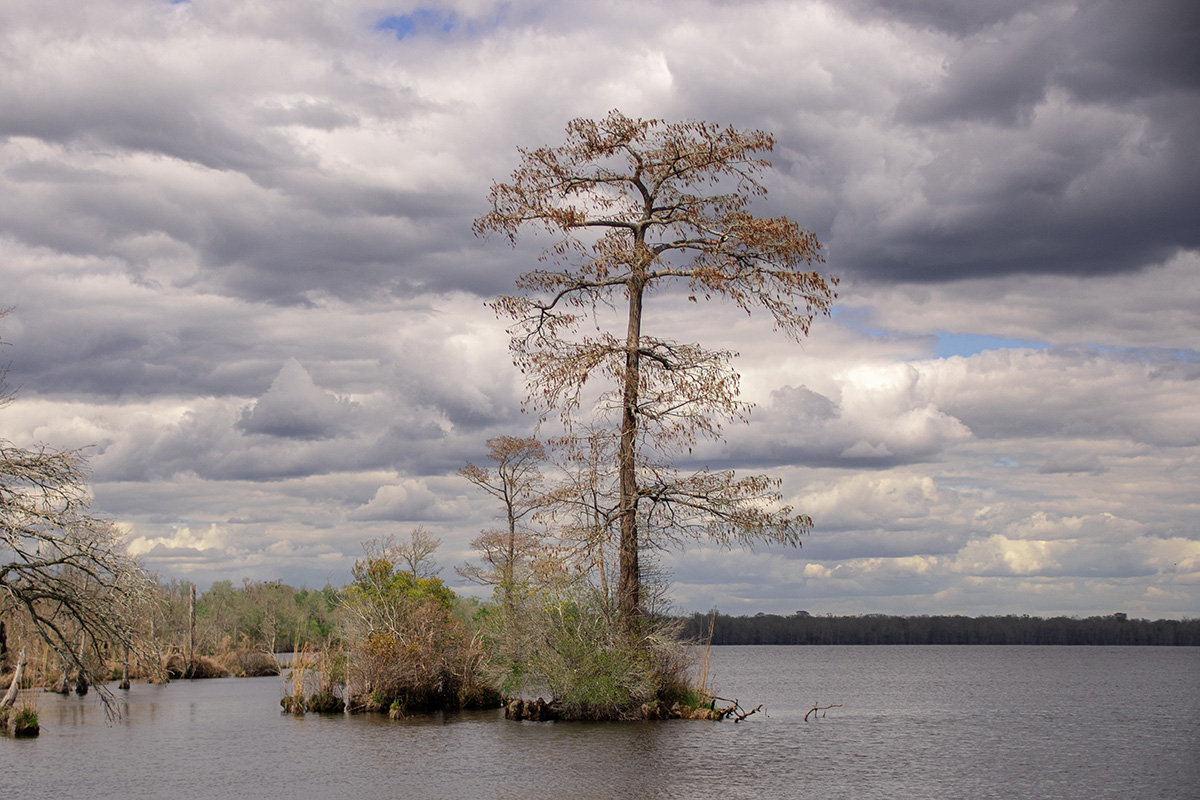
A striking bald cypress in Lake Drummond.
The refuge is a dream for wildlife lovers, and is a fantastic location for birdwatching, especially during the spring migration, as many species return to the area. I found red-headed, pileated, red-bellied, and downy woodpeckers readily throughout the refuge. Be sure to look closely for any deadwood trees throughout the swamp, as woodpeckers prize dead trees above all others for hiding their secret stashes of food as they prepare for the winter. Several species of warblers can also be found throughout the refuge, the dazzling yellow of the prothonotary warbler being my favorite and the most striking. Similarly, turkey are also quite common throughout the refuge and you are almost certain to see them.
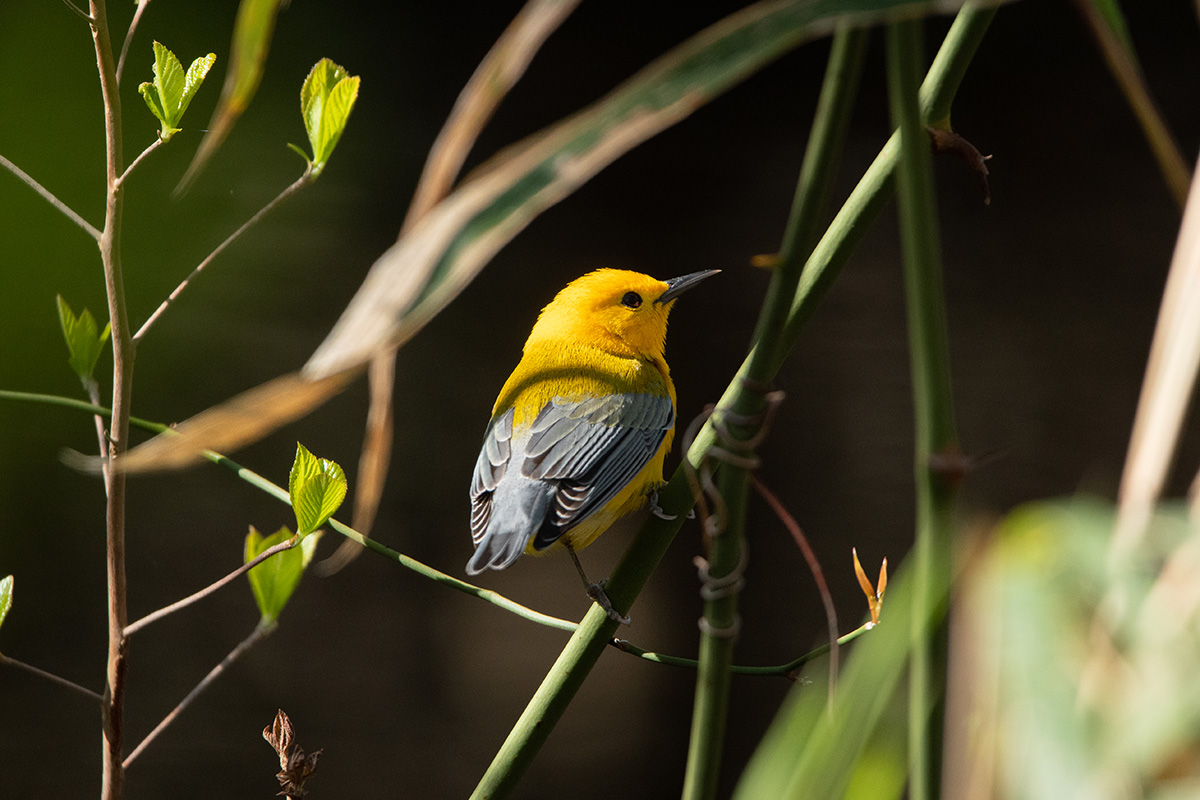
The brightly colored prothonotary warbler.
Even after the spring bird migration the refuge remains alive with wildlife, especially mammals rarely seen elsewhere. Bobcat, river otters, and black bear are common throughout the refuge. My first morning exploring the Portsmouth Ditch trail, I quickly realized just how densely populated the refuge is with these mammals. The ground was absolutely littered with black bear and otter droppings and tracks. I urge you all to familiarize yourself with identifying the droppings and tracks as it will enhance your outdoor experience and certainly help you identify the most trafficked areas for these animals! Additionally, be sure to visit the refuge as early as you can manage, as most larger mammals (especially bobcat, otter, and black bear) are crepuscular, meaning they are most active around both dawn and dusk, and tend to avoid the heat of the day.
While bobcats are certainly the most elusive of this prized mammal trio, you stand a good chance at seeing river otters. Otters can be highly social and habitual animals and use a system of latrines, which are locations where several individuals of the nearby otter population (you guessed it) defecate. While it may seem gross to us humans, it serves an important purpose! It functions as sort of social network that all the otter population can use: Who is in the area, a rival, or a possible mate? How many others are out there? Are the others healthy? For this reason, otters are constantly checking these sites, which often are in the middle of the trail, and I was lucky enough to watch as several otters visited the same latrine over the course of a few hours.
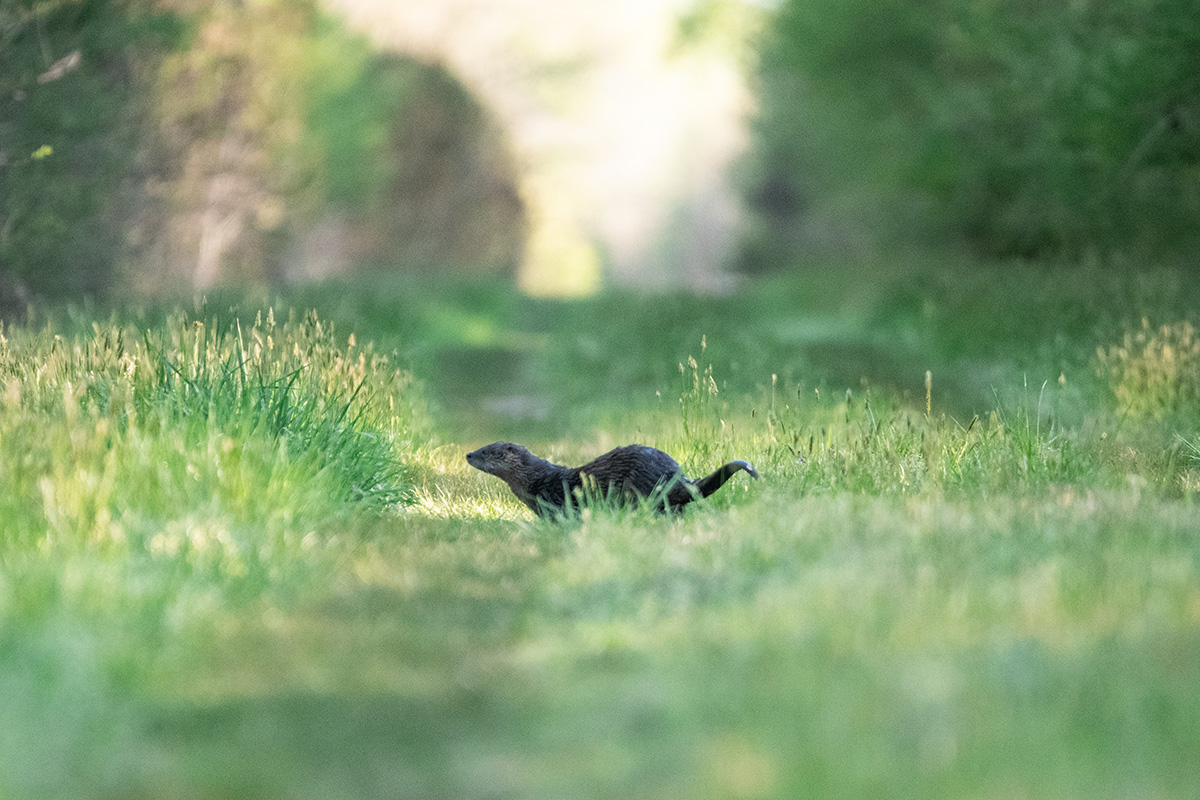
One of the many river otters in residence.
The swamp may also be the best location to see black bear in Virginia, as it contains one of the highest densities of bear in the state. The swamp is a black bear dreamland: hardly any people and loaded with more blackberry brambles than one can imagine. I briefly saw a few bears while at the swamp and heard more, but the evidence of their presence is everywhere. By the end of April as the weather continues to warm, bear sightings will become even more common. As such, it is crucial that you know proper bear etiquette before you head out to the refuge. I would strongly encourage you all to consult DWR’s information on proper behavior around bears, particularly now as many sows are coming out of hibernation with several cubs in tow.
If you can make it to only one location on the Suffolk Loop, I would certainly recommend the Great Dismal Swamp to be the top choice. That being said, you should definitely come prepared. While the trails are quite flat and by no means hard to navigate, they are exceedingly long, and as the weather warms, will become increasingly hot, humid, and full of mosquitos. It is a swamp after all! In fact, I hiked over 12 miles in the refuge one afternoon, so make sure to bring water. I had a blast exploring this unique area and I am already eager to head back in hopes of photographing even more of what the Swamp has to offer. You just never know what you might spot in the vastness of the Swamp!
Explore the Wild with Wade Monroe
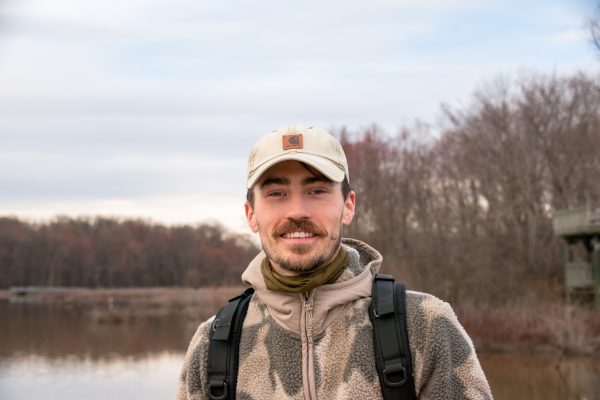
Wade Monroe is a wildlife photojournalist with a focus on wildlife conservation.
If you would like to follow along as he explores the Virginia Bird and Wildlife Trail, then make sure to subscribe to DWR’s Notes From the Field newsletter.
Follow Wade on Instagram @wademonroephoto to see all of his amazing photography.


